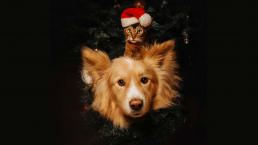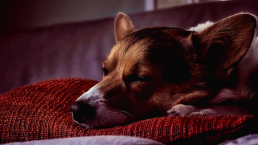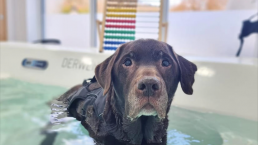As lock down looks set to continue, we wanted to keep in touch. We are missing you all and hope you are all keeping well. We know that some of our lovely friends may now be starting to struggle due to missing out on their usual hydrotherapy treatment.
Here are some suggestions on how to keep your pooches mobile and comfortable in these difficult times.
EXERCISE:
There has probably been lots of changes to routine. As you are only allowed 1 walk per day this may have impacted on older dogs which benefit from shorter more regular exercise or those recovering from surgery that have been building up their exercise. Also, dogs that need to maintain their muscle bulk to keep conditions at bay. If there is more than one person able to exercise your dog in your household then your pet may go out multiple times this is the ideal scenario. However, this isn’t possible for everyone. DO NOT be tempted to walk your dog for longer just because you can or play lots of fetch to tire them out (sliding and suddenly stopping for a ball is not good for their joints) only go out once. You could try replacing some walks with things like.
- Scatter feeding, – take part or all your dog’s meal and scatter it round the garden this will keep them busy and gently active.
- Scent work, – Hide treats or favourite toy if watching the waistline. Stick ham or small bits of cheese to objects in the house or garden and encourage your dog to search for them. Start off easy and as they get the idea of the game you can start to make it harder.
- Slowly walking your pet over different surfaces. A mini obstacle courses. Lay out some vet bed, a sofa cushion, duvet, broom handles.(do not do agility style jumps!)
Mental stimulation/ brain work can be more tiring than going for a walk.
RESTING:
Some dogs may be struggling because they have been more active than they usually are. If you work and they are home alone then they probably spend most of the day sleeping! If there are now people at home all day every day, they are not getting the down time they usually have they are following you round the house, free access to the garden and children to play with. You may find that they could benefit from some enforced rest.
Do they have an area they can take themselves off to if they need time out?
Encourage rest times in these areas with things like:
- Stuffed Kong’s
- Lick mats
- Long lasting safe chews (supervision may be needed)
It’s a bit of a balancing act with the new routine it may take some time to work out what will work for your dog because as much as they can over exercise they can also over rest! Be mindful if they are spending longer periods of time resting than usual and encourage them to have short bursts if activity throughout the day.
WEIGHT:
Keep a close eye on your dogs’ weight. You don’t want them to gain weight because they have had a reduction in exercise. An increase in weight will put extra pressure on their joints, causing pain. Check your dog’s body condition weekly. We like to use a body conditioning score chart. Its more about the way a dog looks and feel rather than their physical weight. You want to aim for score of 4 to 5.
- Weigh each meal (or daily allowance) rather than use a scoop. If you use a scoop it is very easy to over feed without realising.
- Use some of their daily allowance to use as treats as needed throughout the day
- Take out some of the allowance if you have given higher calorie treats such as dental chew, cheese, corner of toast, part of your digestive biscuit.
Also be mindful that if their activity levels have decreased you may also need to reduce their allowance by a bit.
GROOMING:
Grooming your pet is not only good bonding, it also has many benefits such as:
- Removes dead hair keeping your pet cool. Older dogs find it harder to cool down as the weather warms so removing the dead hair will certainly help.
- It stops the formation of matts which can be painful.
- You will also pick up new or changes in lumps and bumps.
- Pay attention to changes in how the hair lays as this can indicate pain or muscle tension.
- If there are areas of pink staining on joints, then this can be a sign that your dog is licking them.This can be a sign of joint pain.
- Grooming/stroking your dog can help with circulation and blood flow. Help muscle and nerve stimulation.
SWIMMING:
You may be tempted to take them swimming as it is getting warmer and they benefit from hydrotherapy. Please remember hydrotherapy is not just going for a swim. The water is warm and helps to relax their muscles. We are also with them to keep them safe. Swimming is hard work and they do not swim continuously when they are with us. Many also use buoyancy aids and floats to help support them correctly in the water. And you do not know how strong the currents are.
Please remember that getting in and out of a riverbank will be hard work and put more strain on their joints.
OTHER SUPPORT:
We really like a website called Canine Arthritis Management (CAM) they also have Facebook page of the same name. it is a really good resource for owners who have pets suffering from arthritis and it can be beneficial for those recovering from surgery too.
It has lots of ideas on how you can make small changes in their home environment that can help or maintain mobility. Looking at things like slippery floors and steps. All good practice but especially when they don’t have access to hydrotherapy. There are resources to help you recognise if your dog is in pain and good day bad day diaries.
https://caninearthritis.co.uk/
NEED HELP!
If you feel that your dog is struggling, then please contact your vet. Most are offering phone consults and will see your pet if they feel it is necessary. Please call them 1st they will not let you in if you just turn up your dog need not be in pain because they are having to miss out on their usual treatment.
Some physios and massage therapist are offering video consults. It is worth checking if you already have this treatment in place. If not, you could ask your vet if they would recommend one if it felt that this would be a suitable alternative. A referral may be needed.


